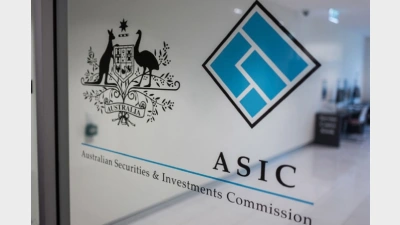Returns find saturation point
Australian equities have been the backbone of strong super fund performance for most of the past four years, and while few are suggesting domestic equities have reached their peak, Stuart James, associate director of Aberdeen Asset Management, believes there is definitely movement to be seen in many fund portfolios.
“Over the last 12 months we have definitely seen a lot more demand for international equities,” James said. “The domestic market is looking expensive, and funds are realising the geographical and sector diversification that international exposure can give.”
But according to Tim Ridley, senior consultant at Frontier Investment Consulting, not all funds are adjusting their asset allocations.
“Some of our clients may not want to change their allocation if they have a solely longer term focus,” he said. “But if they are looking to take into account the medium-term investment environment, then we would currently suggest a tilt towards international equities as opposed to the domestic market.”
Ridley said there was cyclical risk related to commodities within the Australian equities market at the moment, and valuations in our market are less favourable than overseas markets.
“The Australian market is now less broad based than a year ago,” he said. “Its performance is increasingly linked to the performance of commodity prices.”
Rob Fowler, investments and governance manager for large industry fund HESTA, said each fund’s approach to trends in the domestic equities market would be different.
He said that while he felt neither market was overpriced, funds without high weightings towards international exposure might find it compelling to change.
“Plenty of people are saying that the outlook for international equities is more favourable,” Fowler said.
Fowler also said recent pullbacks in domestic equities allocations weren’t necessarily value related.
“It’s more about liquidity and a return to sanity than about levels of risk exposure,” he said. “The riskier asset classes simply haven’t been reflecting the levels of risk inherent in them. Recent pull backs have simply been a more sensible recognition of the risks that exist in sub asset classes, risks that are ignored when the outlook is so positive.”
While some funds may be maintaining the status quo in terms of allocations, UniSuper is one fund that has already responded to the strong growth that domestic equities have seen for so long.
“UniSuper has made a number of changes over the last three months,” said UniSuper chief investment officer David St John. “Aside from re-weighting allocations towards the international market, we have also increased our levels of exposure towards property, CPI [consumer price index] bonds and alternative assets.”
On the flip side, St John said UniSuper’s exposure to emerging markets, which was increased back in 2003, had decreased back to the benchmark.
Though changes in asset allocation may not be front of mind for all funds, experts agree managers and executives must constantly be aware of changes in equities markets.
Asked whether liquidity and inflow were a concern in terms of a fund’s ability to react quickly, James said Aberdeen was aware liquidity could become an issue.
“But when it comes to taking advantage of opportunities in the market and doing so quickly, it’s more about knowing the company,” he said. “Looking offshore, Aberdeeen run concentrated portfolios. We know which companies we like and can move quickly because we have already completed our due diligence.”
St John has a similar take on liquidity issues.
“Illiquidity definitely poses a greater cost,” he said. “But the ability to move quickly in investment environments is much more about implementation than anything else.”
Alternatively, Ridley stated that, in many circumstances, cash flow could be used to tilt fund portfolios gradually.
“Frontier’s clients tend to adjust their exposure gradually,” he said. “What we are looking for is significant risks and opportunities in the marketplace before we consider advising clients to alter their allocations.”
He said that even then, unless there are very compelling circumstances, any changes made would not be large given the importance of the long-term.
When it comes to taking advantage of investment opportunity, James admits the knee-jerk reaction is almost never the right reaction.
“The worst thing possible is to be chasing markets,” he said. “It’s important not to fall into value traps when the market is hot. That means not selling when everyone else is selling, and if an opportunity has been missed, don’t chase it in the hopes of cashing-in anyway.”
According to Fowler, when it comes to drawing the line between being active and reactive in your investment strategy, it comes down to circumstance.
“There is no doubt that if a fund is changing its position in a tactical fashion, then it is better to do it in advance,” he said. “At HESTA, we work on a contrarium basis and aim not to be following the rest of the herd.”
In terms of having a dynamic investment strategy, Ridley said Frontier assessed both valuations and cyclical considerations. Ridley said looking at both aspects gave a better perspective of the likely investment environment. “For instance, in 1998 and 1999 global equity valuations were very expensive, but the cycle helped equities to perform favourably until 2000.
“When formulating investment strategy, Frontier looks for opportunities and risks for each asset class,” he said. “But when opportunities to increase or lower exposure present themselves, changes tend to be implemented in a relatively gradual fashion, unless there is an extreme risk or opportunity.”
Whether you believe domestic equities returns have reached their peak or not, the superannuation spotlight lies squarely on asset allocation and those responsible for it: investment managers. But is performance everything?
St John admits that while performance is most certainly the end goal, every aspect of an investment manager impacts performance and is important.
“UniSuper takes everything into consideration,” he said. “The people, the processes behind their strategies, past performance and even their back office; everything comes into it.”
HESTA, according to Fowler, look at slightly different areas when choosing investment managers as well as those mentioned by St John.
“We look at a manager’s activity with respect to corporate governance attitudes and SRI [socially responsible investment] considerations,” he said. “The majority of assets don’t have SRI overlays, but we still feel it is important to take this into account.”
Fowler said style was important, if difficult to quantify.
“Over the last five months we wouldn’t have expected value oriented managers to over perform. So we also look at the market’s correlation to the manager’s style and obviously wish to make sure that their performance has been consistent.”
On the other side of the lines, James said performance was almost secondary when it came to evaluating an investment manager.
“If a manager sticks to their philosophy and strategies, then the returns will come in the long run,” he said. “A fund should be looking at the track record of the manager in a range of different asset classes, and will notice that the better managers lessen the impact of bad times.”
On the other hand, Ridley stated that it was difficult to deny performance was ultimately the bottom line.
“But it should be remembered that a manager’s previous performance will not necessarily be replicated,” he said. “It is far more important to examine the key drivers of manager performance to ensure consistent favourable performance over the medium to long-term is likely.”
Ridley identified the key factors as being quality people, a well-defined and transparent process and a close alignment of interests with investors, particularly with an ownership structure that attracts and retains good people.
Specifically, James said Aberdeen had recognised growth in Japan and the strengthening of the European market, but added that India was attracting increased interest.
“India has a growing population, with a large proportion of that population being under the age of 25,” he said. “At the moment, it is Aberdeen’s preferred offshore market due to its growing economy and massive growth potential.
“With Japan, it seems as if deflation may be fully behind it now, so our weightings there, and in China and in Europe, are quite prominent. On the other hand, our asset allocations are 30 per cent underweight in the US,” James said.
Interestingly, Ridley stated that Frontier did not examine the relative attractiveness of individual regions or countries when considering international equities from a strategic perspective. He did, however, indicate that fund managers were becoming increasingly comfortable with Japan.
“Japan seems to be recovering for the first time since its bubble burst in 89,” he said. “And fund managers have a lot of conviction about emerging markets.
“From the fund side of the fence, while Fowler stated that HESTA left speculation on international markets to their underlying managers, St John said UniSuper took an active role in its international allocation.
“We haven’t looked at Europe specifically, but we considered the Japanese market in detail three months ago,” he said. “Our decision was not to add to our existing exposures, however we also made the decision to decrease our allocations to emerging markets at the same time.”
When it came to looking offshore, James said the risks to a fund’s investment had decreased dramatically recently.
“The fiscal policies of offshore emerging markets are much tighter now,” he said. “In many cases they are the lenders and not the borrowers, and are becoming more and more cash rich.”
Recommended for you
The structural shift towards active ETFs will reshape the asset management industry, according to McKinsey, and financial advisers will be a key group for managers to focus their distribution.
ASIC has warned that practices across the $200 billion private credit market are inconsistent and, in some cases, require serious improvement.
A surge in electricity prices has driven the monthly Consumer Price Index to its highest level in a year, exceeding forecasts.
Infrastructure well-positioned to hedge against global uncertainty, says investment chief.







